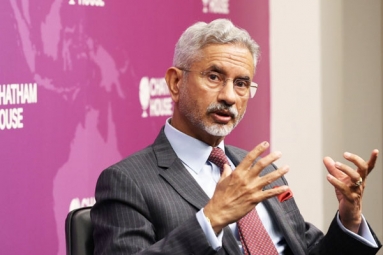
(Image source from: Ndtv.com)
Four decades post the Bhopal gas disaster, its hazardous leftovers are resurfacing. Nearly 350 metric tons of unsafe waste from the Union Carbide plant will be managed at the Treatment Storage Disposal Facility in Pithampur, Indore. The facility has fallen short in six prior assessments to confirm it can contain the emission that poses severe cancer risks. The expenses incurred will be notably higher. Earlier, a German company, GIZ, proposed to transport the waste to Germany and get rid of it for ₹ 22 crore. Now, the disposal will amount to ₹ 126 crore -- about six times more than before. The expense to health could not be truly calculated. This disposal sum constitutes only 5% of the total hazardous waste. However, experts caution that it could release significant volumes of organochlorine, dioxins, and furans -- toxic substances that are highly detrimental to humans and the ecosystem. The incineration spot in Pithampur has numerous villages located within a 2 km range. The World Health Organization has further cautioned that incineration at an unreliable location could induce cancer. "In earlier times, we opposed the incineration of this waste.
It won't be done in our city. But now it's going to be burned in Pithampur, the whole process will last half a year. The coordinator of the NGO, Lok Maitri Sansthan, Gautam Kothar, mentioned that if this is allowed, they will oppose it. This idea has been considered for a while. The Madhya Pradesh government objected to it in 2012, presenting a petition to the Supreme Court. In the same year, the former Chief Minister Babulal Gaur and the Environment Minister Jayant Malaiya strongly reprimanded the idea of burning the waste in Pithampur. They were worried about the contamination of Yashwant Sagar Dam and Tarapura village. No one wanted to be in charge of the waste. In 2007, Gujarat didn't want to incinerate Bhopal's waste even with financial offers. In 2011, Maharashtra rejected DRDO's plan to burn the waste in Nagpur. Andhra Pradesh also denied taking the waste in. The minister mentioned that after coming into office, they secured funding from the Government of India for the waste. They are collaborating with the central government to handle it. Contracts were already put forth before they were appointed as the minister.
"It's been 40 years and we still can't change the decision to burn the waste," mentioned Kunwar Vijay Shah, Minister of Gas Relief and Rehabilitation. The waste that has been sitting for decades has seeped into the soil and groundwater, presenting a significant danger to future generations. Information indicates that between 2004 and 2018, harmful waste spread through the groundwater in 42 communities near the Union Carbide factory.
Over the past five years, the pollution has extended to 29 more communities. The exact number of lives lost due to the tragedy is uncertain - the central government gives a figure of 5,295, whereas Madhya Pradesh states 15,342, and the Indian Council of Medical Research (ICMR) estimates 25,000. However, the impact stretches far beyond mere statistics. Survivors grapple with ongoing health problems and a lack of adequate assistance. The toxic waste from the Union Carbide factory has significantly polluted the groundwater in Brij Vihar Colony, about 3 kilometers away. Arif Nagar, situated just across from the factory, continues to experience the repercussions. Countless individuals affected by the gas leak, their descendants included, endure the long-term consequences. Several children are born with physical and mental disabilities, yet their families cannot afford the necessary medical care. Water in the affected regions is so tainted that it leaves noticeable residues in containers and coolers within a matter of weeks. Local residents report a spike in diabetes, heart diseases, and other severe illnesses. Between 2004 and 2018, the toxic waste contaminated the groundwater in 42 neighborhoods surrounding the factory.
The water contamination issue has affected an additional 29 settlements over the past five years, causing significant health problems for residents. In Bhopal's Brij Vihar Colony, Bhagwati Prasad Pandey experienced a heart attack due to the contaminated water. The municipal corporation was instructed to provide clean water, but they declined, as it was considered a private colony. Residents reported suffering from gallbladder issues, kidney stones, and skin infections due to heavy metals in the water. Despite complaints, clean water has not been provided. At Arif Nagar settlement near Union Carbide, residents continue to deal with the ill-effects of the contamination. Amina shared her tragic story of giving birth to a child with severe health issues linked to the contaminated water.
Today, everyone in our home is unwell due to water-related issues. Danu Singh and Aashiya are like other parents who take their sick children and grandchildren to the hospital for treatment. These kids can't talk or hear, so they use hand signals to communicate. Mr Singh describes how his child can't digest food because the water is so polluted, leading to constant vomiting. Aashiya explains that her child has always been weak, suffering from seizures, fevers, and stomach pains, with their liver and stomach affected by the contaminated water. Although the United Nations Environment Programme offered to look into the toxic waste problem back in 2014, the government didn't act. While experts suggest that Union Carbide and Dow Chemical should be liable for disposing of the harmful waste, no legal action has been taken against them as they argue they're beyond the reach of Indian courts.










